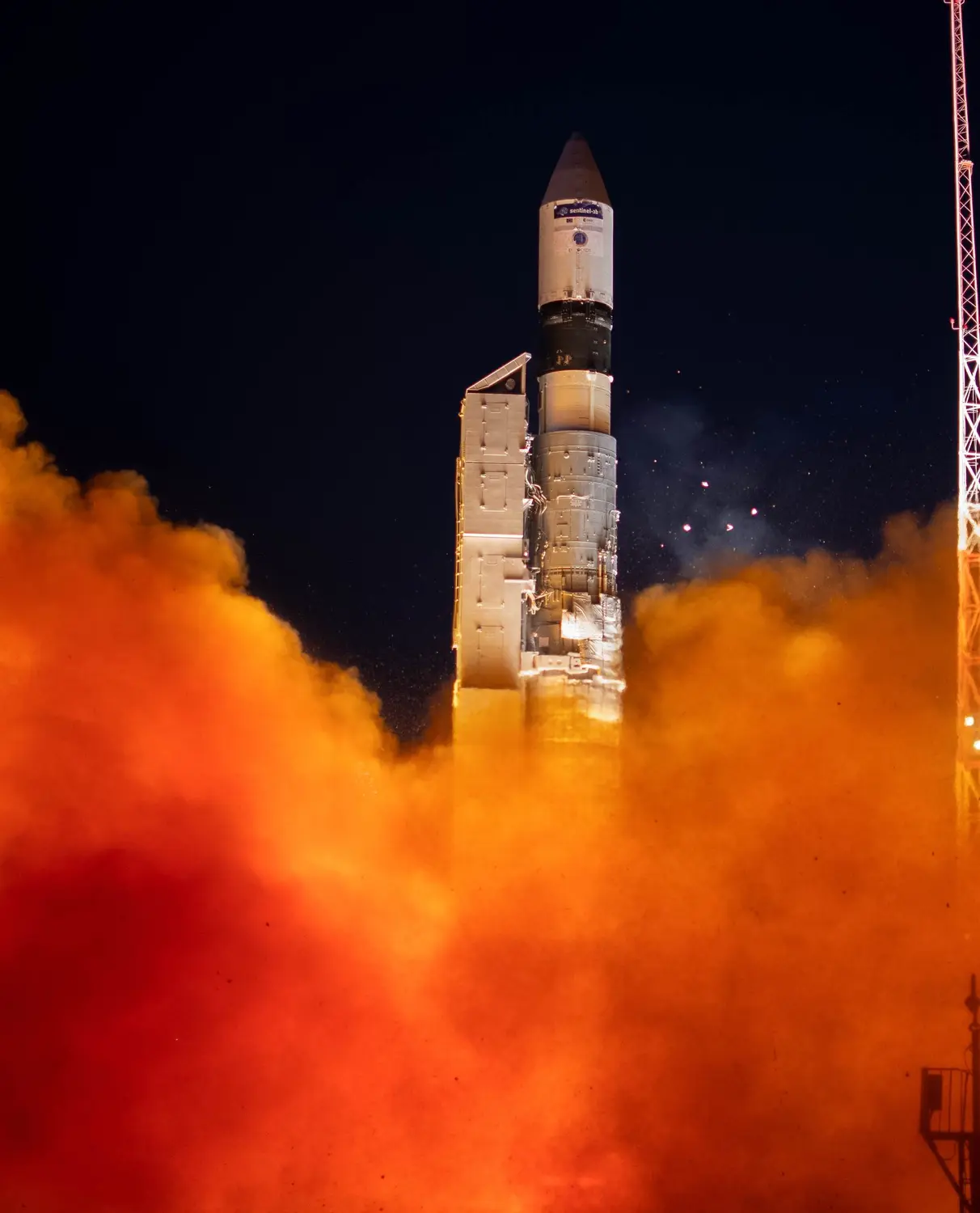Cosmos 2470
Launch Partial Failure
Liftoff Time (GMT)
14:00:14
Tuesday February 1, 2011
Mission Details
Launch Notes
The second ignition of the Briz-KM caused the loss of control of the stage, the Cosmos satellite was separated on an elliptical orbit. It was able to fulfill its mission, but burned up in the atmosphere only two years after its launch.
Cosmos 2470
The Geo-IK-2 is a Russian series of new generation military geodesy satellites replacing the Soviet Union's Geo-IK and Sfera constellations. They are intended to be used to create high precision three-dimensional maps of the Earth's surface, and to monitor plate tectonics. The satellites are produced by ISS Reshetnev, and have a mass of around 1,400 kilograms. They operate in a circular orbit at an altitude of around 1,000 kilometres above the Earth's surface. The satellite consists of a pressurized container, that is 1,3 m in diameter and length, heat-regulation shutters, honeycomb panels, and an astroplate with an antenna assembly and rigidly fixed solar arrays. Some elements of the electric power supply system and the thruster units of the propulsion system were taken from the Glonass-M spacecraft, parts of the attitude and orbit control system were borrowed from SESAT, Ekspress-AM and Luch-4.
Low Earth Orbit
1 Payload
1,400 kilograms
Rocket


Manufacturer
KhrunichevPrice
$13.00 million
Rocket
Height: 29.1m
Payload to Orbit
LEO: 2,150 kg
GTO: 0 kg
Liftoff Thrust
1,875 Kilonewtons
Fairing
Diameter: 2.62m
Height: 6.74m
Stages
3
Launch Site
Stats
Rokot
18th
Mission
1st
Mission of 2011
2011
5th
Orbital launch attempt